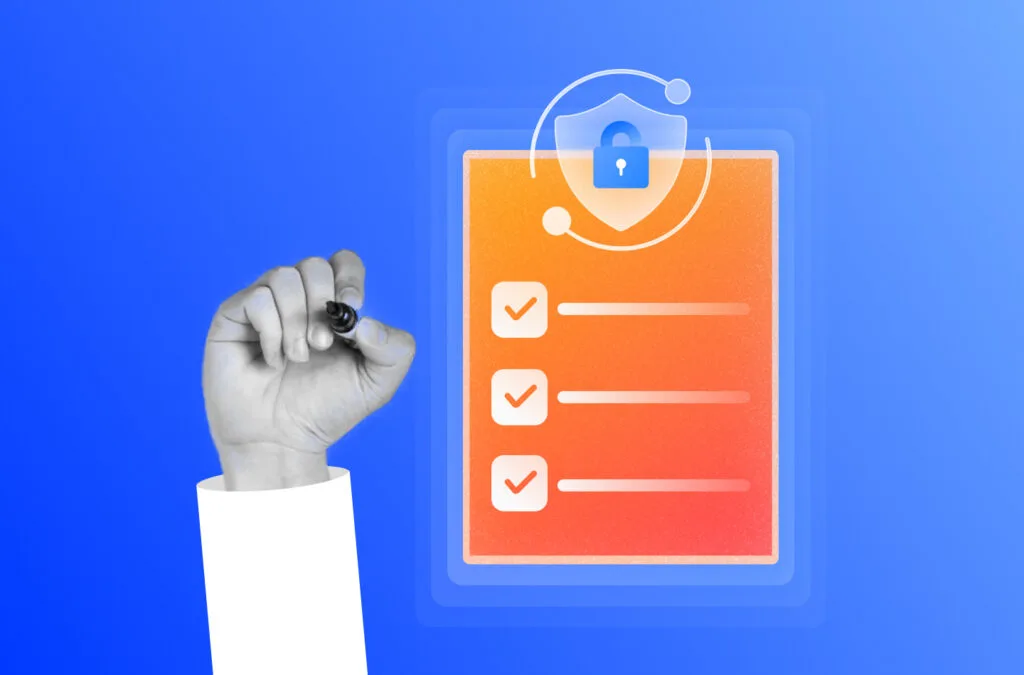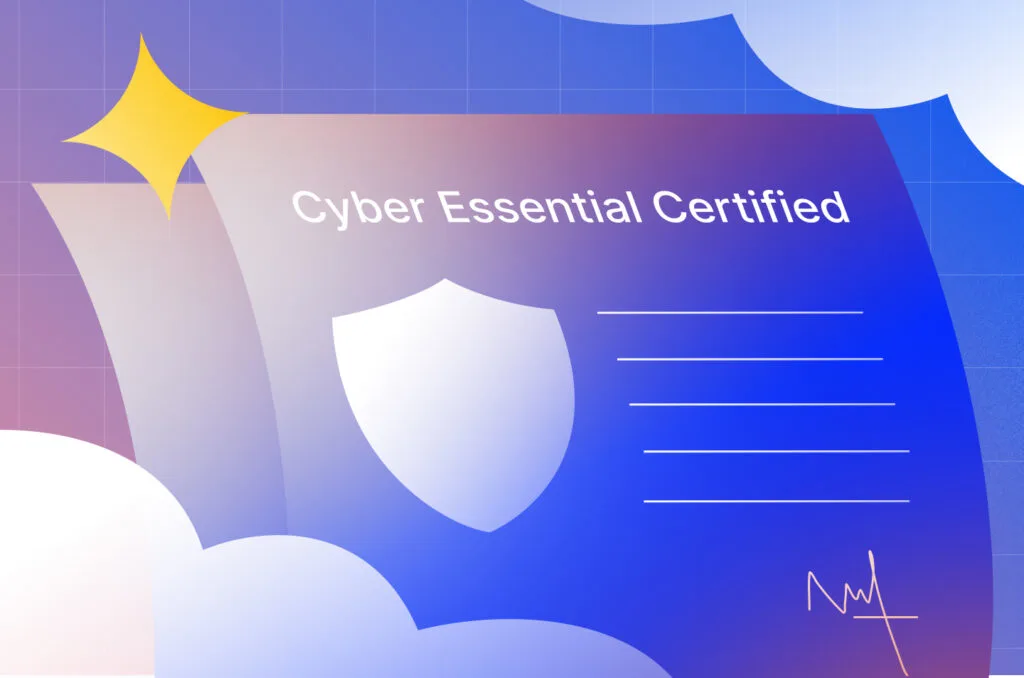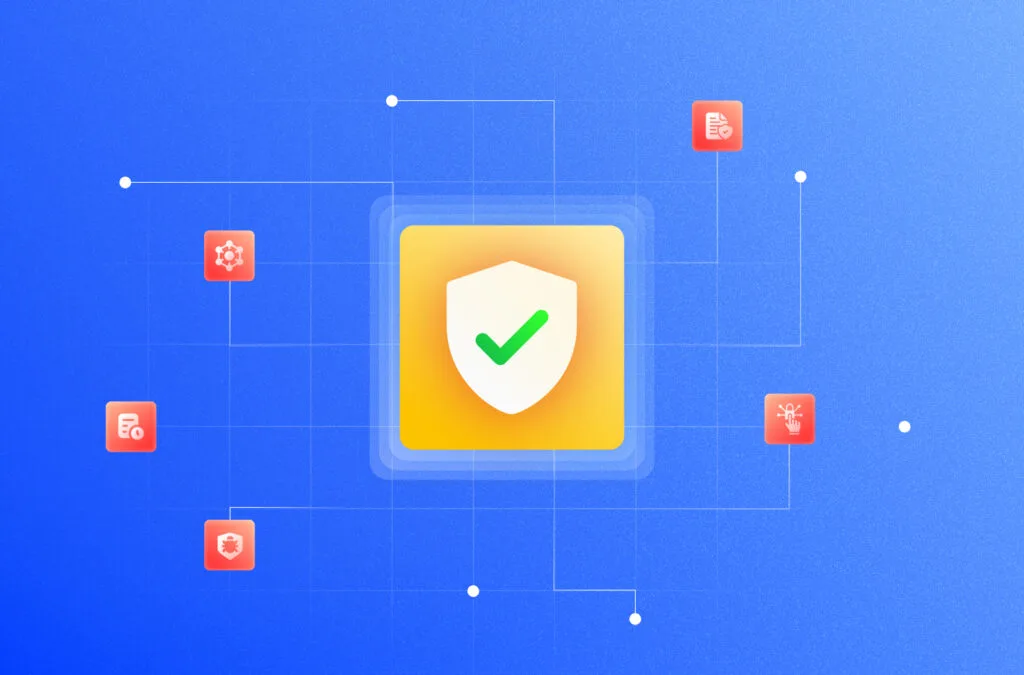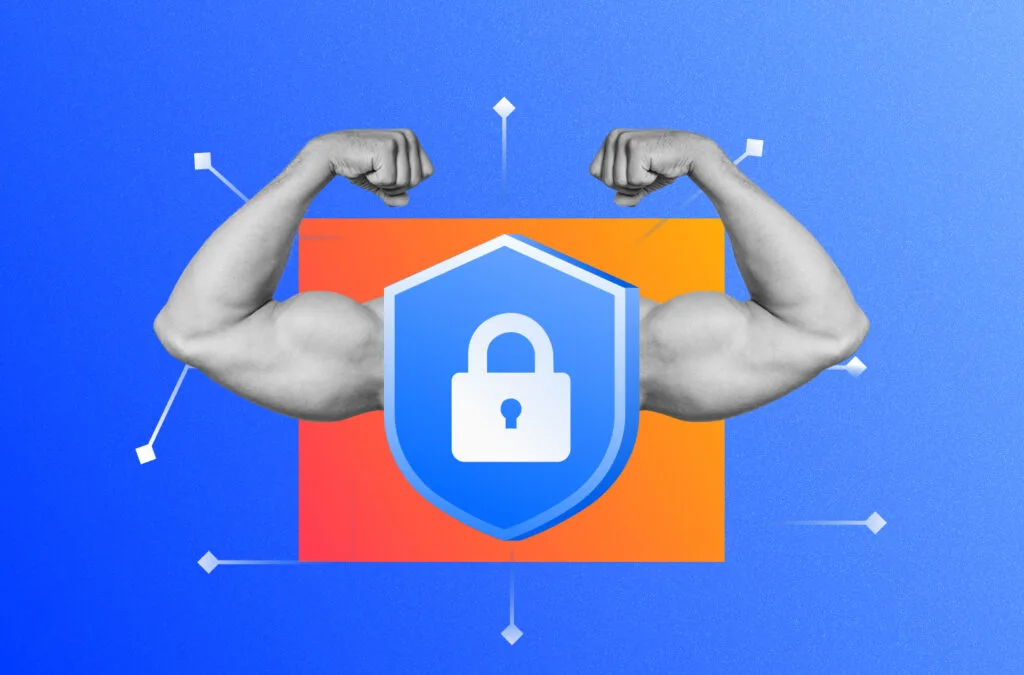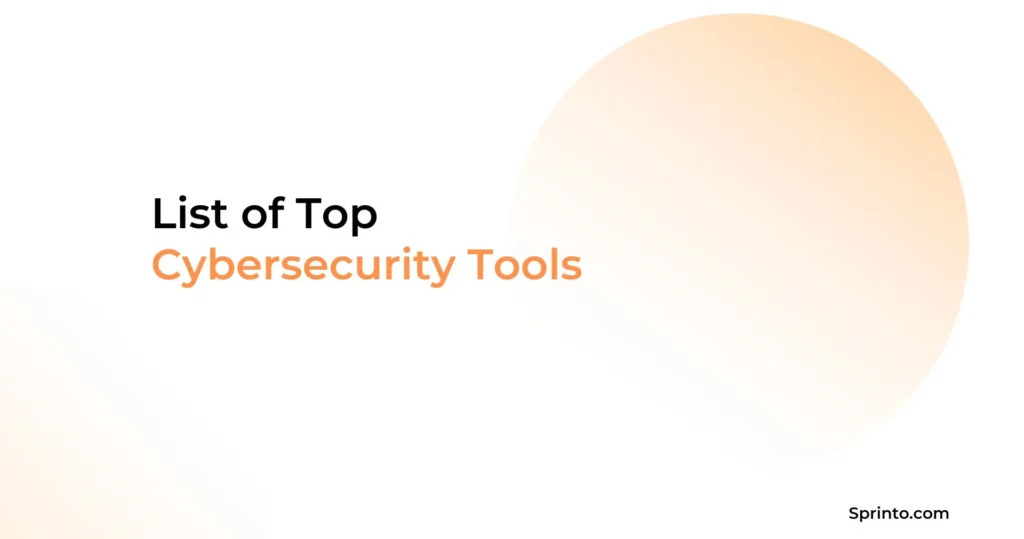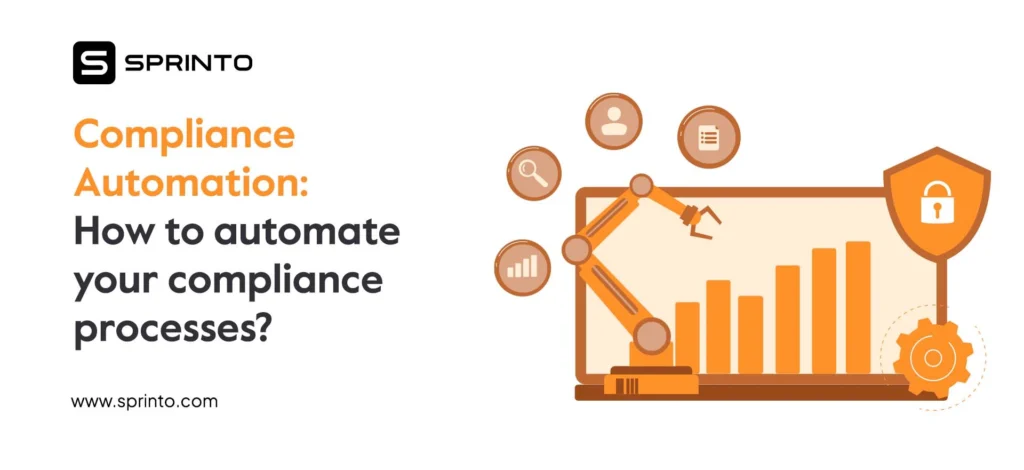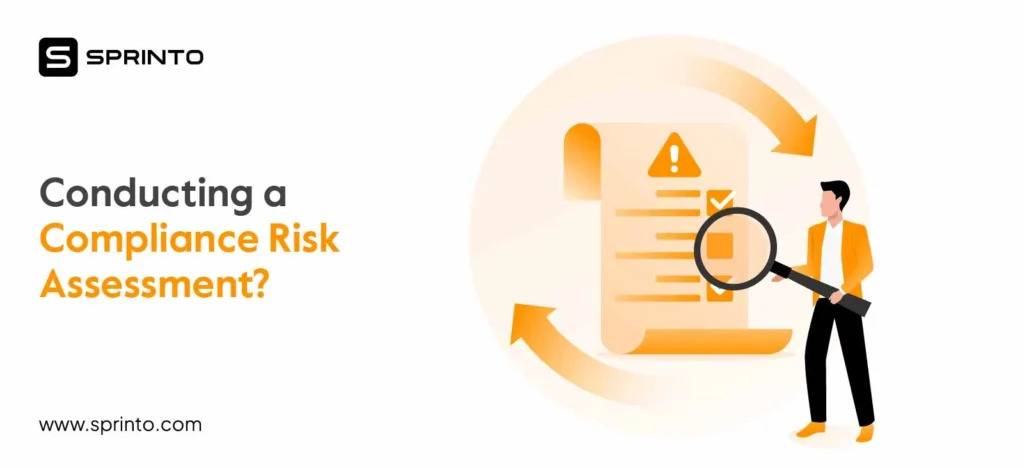Cybercriminals are smart; they know it’s easier to trick a person than hack a system. With phishing emails, malicious links, or convincing impersonations, they bypass all the layers of technology to target your employees. Your business is at risk if your team doesn’t know how to recognize these subtle threats.
We all know but often forget that humans are a link in the chain and the first line of defense.
That’s why cybersecurity awareness training is so critical—for everyone.
Cybersecurity awareness training ensures your employees are sharp enough to spot these dangers, avoid risky actions, and act swiftly to protect your business. It’s not just about training the IT team—everyone from marketing to finance, even the receptionist, needs to be on guard.
In this article, we’ll dive into exactly what cybersecurity awareness training entails and explore the benefits of implementing it across your company.
By the end, you’ll see that training your team is much more important and keeps your business from becoming a sitting duck for cyber threats.
TL;DR
| Without proper awareness, your employees are an easy target for phishing attacks and other scams. Effective cybersecurity awareness training transforms your team into a vigilant first line of defense. |
| Not all employees need the same level of detail. Tailoring training to specific roles and responsibilities ensures everyone receives the relevant information they need to protect themselves and the organization. |
| The implementation of cybersecurity awareness training starts with getting leadership buy-in, choosing a suitable training option, and regular retraining. |
Cybersecurity Awareness Training: Your Best Bet on Resilience
Cybersecurity awareness training is required for your employees to help them understand the best practices for staying safe online and how aware they are of threats. It educates everyone in your organization to be alert to the dangers they face daily, from the top down.
Rightfully, one of our Compliance Experts, Varenya Penna, opines, “Every click is a choice, and every choice is a chance to strengthen digital assets. Empower yourself with cybersecurity knowledge and take charge of your data security.”
It’s because over 90% of today’s cyberattacks start with a human link (an email), and nearly a quarter of phishing emails get opened by employees who don’t realize what hit them and when.
Cybercriminals have always relied on tricking people into clicking on bad links, opening dangerous attachments, or giving away passwords and personal information. Once they have that, they can easily bypass even the strongest cybersecurity defenses.
Also check: How much does Cyber Essentials Certification Cost?
These employees often think:
- “I’m not important, and no one will target me.”
- “I don’t have anything worth stealing.”
- “Even if I wanted to stop them, I couldn’t.”
This mindset is exactly what attackers count on—complacency and lack of awareness.
It doesn’t matter how much money you’ve poured into the latest security tools or how advanced your strategy is—if your team can’t spot a suspicious email or a shady link, your entire defense can be undone. This is why cybersecurity awareness is key, as it arms your team with the skills to recognize threats before they do damage.
Importance of Cybersecurity Awareness Training
Cybersecurity awareness training is vital because it helps your employees grasp the risks, and understand attack pathways and their role in it and threats associated with cyberattacks.
But why stop there?
It’s important that each person understands the specific threats related to their role. Imagine if every employee knew exactly how to spot a phishing email or handle suspicious links—that’s the kind of knowledge that could prevent many headaches.
Empowering every employee with relevant information protects your business and safeguards their personal online safety.
What Every Cybersecurity Awareness Training Should Cover
If you want to safeguard your organization against cyber threats, the right training can make all the difference. But what exactly should you expect from a top-notch cybersecurity awareness program?
Here’s a rundown of 22 topics you should cover in cybersecurity training.
| Topic | Description | Examples |
| Phishing Awareness | Spotting and avoiding deceptive emails and messages | Emails that look like they’re from your bank and ask for your account details are usually phishing scams. |
| Password Management | Creating and handling strong, secure passwords | Password manager to create a unique and complex password and not reuse it on other websites. |
| Social Engineering | Identifying manipulation tactics used to gather sensitive info | Be cautious of getting a phone call from someone claiming to be from the IT department and asking for your login information—it may be a stunt to swindle you. |
| Safe Internet Practices | Navigating the web securely and avoiding risky sites | Do not go for interactive advertisements or download new software programs from unrecognizable websites. A user should always look at the start of the site’s URL, and if there is an ‘s’ in HTTPS, then the site is secure, and the information entered will not be accessed by third parties. |
| Data Protection | Keeping sensitive information and personal data safe | Encrypt important files before emailing them and understand how to handle data according to company policies. |
| Incident Reporting | Knowing how and when to report security issues | If you spot a suspicious email or unusual system behavior, report it to IT immediately instead of ignoring it. |
| Device Security | Keeping your devices safe from threats | Install antivirus software, update your operating system regularly, and lock your devices when not using them. |
| Network Security | Understanding basic network protection practices | To keep your data safe, use a VPN when you’re on public Wi-Fi and make sure your home network is secure. |
| Mobile Security | Protecting your mobile devices from threats. | Install security apps on employee’s phones, keep the operating system up-to-date, and avoid jailbreaking your device. |
| Compliance and Regulations | Knowing the laws and policies that apply to your industry. | Familiarize your employees with regulations like GDPR or HIPAA to ensure you handle data properly and stay compliant. |
| Malware Awareness | Recognizing and avoiding malicious software | Signs of malware, like unexpected pop-ups or slow performance, and report these issues to IT. |
| Safe Email Practices | Handling email communications securely | Don’t click on links or open attachments from unknown senders. Always verify email sources if they seem suspicious. |
| Physical Security | Keeping physical access to devices and sensitive areas secure | Lock the office door when employees leave, and ensure sensitive documents are stored securely. |
| Cloud Security | Ensuring your data is safe in cloud environments | Use strong, unique passwords and enable two-factor authentication for cloud services to protect your data. |
| Backup and Recovery | Setting up and managing data backups and recovery plans | Regularly back up important data and test your recovery procedures to ensure you can restore information if needed. |
| Endpoint Security | Securing end-user devices like computers and smartphones | Make sure the antivirus software is the latest version & install the security patches to avoid the gaps. |
| Secure File Sharing | Sharing files safely | Use encrypted services for transferring sensitive files and avoid using personal email for work-related data. |
| Access Control | Managing who has access to what information | Employees should have access to something only if it is useful; implement the role-based access control and review the users’ permissions often. |
| Security Policies | Understanding and following company security policies | Get familiar with your company’s data handling and incident reporting policies to ensure compliance. |
| Incident Response | Knowing how to react to a security incident | Follow the steps in your incident response plan and know who to contact if you suspect a security breach. |
| Physical Device Security | Protecting the physical security of your hardware | Use cable locks for laptops, and always lock devices when you’re away from your desk. |
| Security Awareness Culture | Building a culture of security within your organization | Encourage team discussions about security concerns and recognize employees who follow best practices. |
Steps for Effective Training Implementation and Building a Cyber-Aware Team
Did you know that only 1 in 9 businesses provided cybersecurity awareness training to non-tech employees in 2020? That’s alarming, especially since attackers often target people—not just systems.
So, how do you fix this? You need to roll out a solid cybersecurity awareness program in your organization. Here’s how you can make it happen:
1. Get leadership buy-in
We all know that “when management prioritizes cybersecurity, employees take it seriously.”
Now your first step is to get the C-Suite on board and it starts with the CEO. Since the CEO is ultimately responsible for most of the company’s risk, it’s crucial to show them how a proactive security strategy can mitigate that risk.
Your job is to help the CEO understand how security is not just limited IT issue—it’s a business issue. Once they’re on board, they can rally the rest of the leadership team to support and enable the security initiatives you need to implement.
Here are the steps you can take to get leadership to agree to implement cybersecurity awareness training for employees:
- Speak their language and understand leadership’s values and concerns.
- Highlight ROI, focusing on uptime, customer trust, and productivity metrics.
- Engage the right decision-makers by identifying security advocates within leadership.
- Emphasize that security tools enhance productivity, not hinder it.
- Highlight features like automation, seamless integrations, and user-friendly interfaces to show how tools align with existing systems.
- Show the link to compliance, as compliance often drives security decisions.
- Acknowledge leadership’s concerns about staffing shortages and focus on tools that extend current resources without adding significant costs, particularly in smaller teams.
Also check: Top 8 AI Cybersecurity Companies – Tips to Choose the Best Company
2. Evaluate training options
What’s the best way to deliver cybersecurity awareness training? Well, there’s no one-size-fits-all answer. What works for one company might not be the right fit for another.
However, here are some training options that are suitable for you.
a) On-the-job training
This is the traditional approach where employees step away from their day-to-day tasks, and an instructor walks them through security topics. The big benefit? Immediate feedback. Employees can ask questions and get expert insights on the spot.
However, classroom training isn’t always ideal for adults, can be expensive, and takes people away from their jobs for extended periods. Plus, long, infrequent sessions don’t exactly help with information retention.
b) Online handouts and presentations
Visuals like posters, handouts, or videos are a quick and simple way to communicate cybersecurity tips—everything from phishing to password safety. They’re easy to process and budget-friendly.
For example, Sprinto, a GRC automation software, provides compliance training materials right from the app. You customize it according to your requirements, and Sprinto will alert employees who have not completed the training materials.
See how a user feels that using Sprinto’s training materials is much easier.
c) Simulations
Testing employees’ responses with fake phishing emails or “lost” USB sticks is an effective way to reinforce security behaviors. Realistic, hands-on experience helps people remember and avoid threats.
But not everyone loves it. Some argue it’s stressful and even unethical. The key is to handle simulations carefully so they teach rather than harm.
3. Implement and enforce new policies
Not everyone grasps the importance of cybersecurity right away, which is why it’s crucial to have clear policies and consistently enforce them.
At Sprinto, we make this easy with over 20+ editable, easy-to-understand policy templates—no legal jargon, just straightforward language. Our security expert-crafted policies are trusted by hundreds of customers.
You can explore, publish, or customize policies using our built-in templates or even upload your own. Sprinto lets you assign policy owners, set review triggers, and track version updates. Our audit-vetted templates simplify your security operations from the start.
4. Retrain your employees periodically
Cybersecurity training isn’t something you can do once and forget about. The cyber threat landscape is constantly changing, and so should your defenses. Regular retraining helps keep everyone up to speed on the latest risks and how to handle them.
Plus, frequent sessions help make cybersecurity part of your company culture, reminding everyone that staying safe online is a shared responsibility.
Case in Point
When Hackerrank decided to level up its cybersecurity posture, it turned to Sprinto. The integration was smooth, with Sprinto fitting into its existing systems to automate monitoring key SOC2 controls based on Trust Service Criteria.
The notable transformation was that Sprinto made it easy for Hackerrank’s 300+ employees to stay sharp with security training. Training modules were delivered directly through the platform, and Hackerrank could track everyone’s progress in one central dashboard.
This way, not only did they keep their compliance on point, but they also made sure their team was always up-to-date on the latest cybersecurity practices.
Save up to 60% on your training materials with Sprinto
Benefits of Cybersecurity Awareness Training
Cybersecurity Awareness Training is essential for helping your team recognize and respond to cyber threats. The benefits are substantial and wide-ranging. Here’s why investing in this training is good:
- Since over 95% of cyber breaches are caused by human error, effective training can turn employees into your first line of defense. They learn to recognize threats like phishing and avoid common mistakes that lead to security breaches.
- More than 91% of cyberattacks start with phishing emails. Training teaches employees to spot suspicious links and emails, drastically reducing the likelihood of falling victim to scams.
- Regular training makes cybersecurity an ingrained part of your company culture. When regularly updated on the latest threats, employees are more likely to stay vigilant and adhere to best practices.
- Training programs that break down complex information into manageable chunks increase learning retention. Short, frequent sessions keep cybersecurity fresh in employees’ minds without overwhelming them.
- Ongoing cybersecurity awareness training is a cost-effective way to mitigate risks and prevent breaches that could lead to significant financial and reputational damage.
Get $50k Worth of Training With Sprinto
Cybersecurity Training Doesn’t Have to Be Complicated—Start Now!
Getting your employees up to speed on cybersecurity doesn’t have to be complicated. The key is to start small and keep it consistent.
Instead of the old-school “once-a-year” security awareness training, which often falls flat, think about regularly delivering bite-sized, manageable training pieces. This approach, known as microlearning, helps keep security in mind and makes the information easier to retain.
You could kick things off by picking someone on your team to share free training materials regularly. Figure out what’s most relevant to your business and start with those topics. This way, you can weave training into your onboarding process, departmental meetings, and general communications.
But if you’re looking for a smoother ride, why not consider Sprinto? With Sprinto, you get an easy-to-use platform that offers ongoing, engaging training modules. It’s designed to fit seamlessly into your workflow, making it hassle-free to keep your team informed and ready to tackle cybersecurity challenges.
Interested? Get in touch with us to know more!
FAQs
What’s the first step in opting for cybersecurity awareness training?
Start by assessing your organization’s specific cybersecurity needs. Identify key areas that require attention, such as phishing, password management, or data protection. This will help tailor the training to address your team’s unique challenges.
How do I choose the right training provider?
Look for a training provider that matches your needs. Consider options like Sprinto, which offers engaging and bite-sized training modules to fit busy schedules and keep employees engaged.
How often should training sessions be held?
Instead of a single annual session, schedule regular training intervals. Monthly or quarterly updates help keep security practices fresh and at the forefront of your employees’ minds
What should I define before starting the training?
Set clear objectives for what you want to achieve with the training. Whether it’s reducing phishing click rates or improving password practices, having defined goals will help in creating a more focused and effective training program.
Meeba Gracy
Meeba, an ISC2-certified cybersecurity specialist, passionately decodes and delivers impactful content on compliance and complex digital security matters. Adept at transforming intricate concepts into accessible insights, she’s committed to enlightening readers. Off the clock, she can be found with her nose in the latest thriller novel or exploring new haunts in the city.
Explore more
research & insights curated to help you earn a seat at the table.









